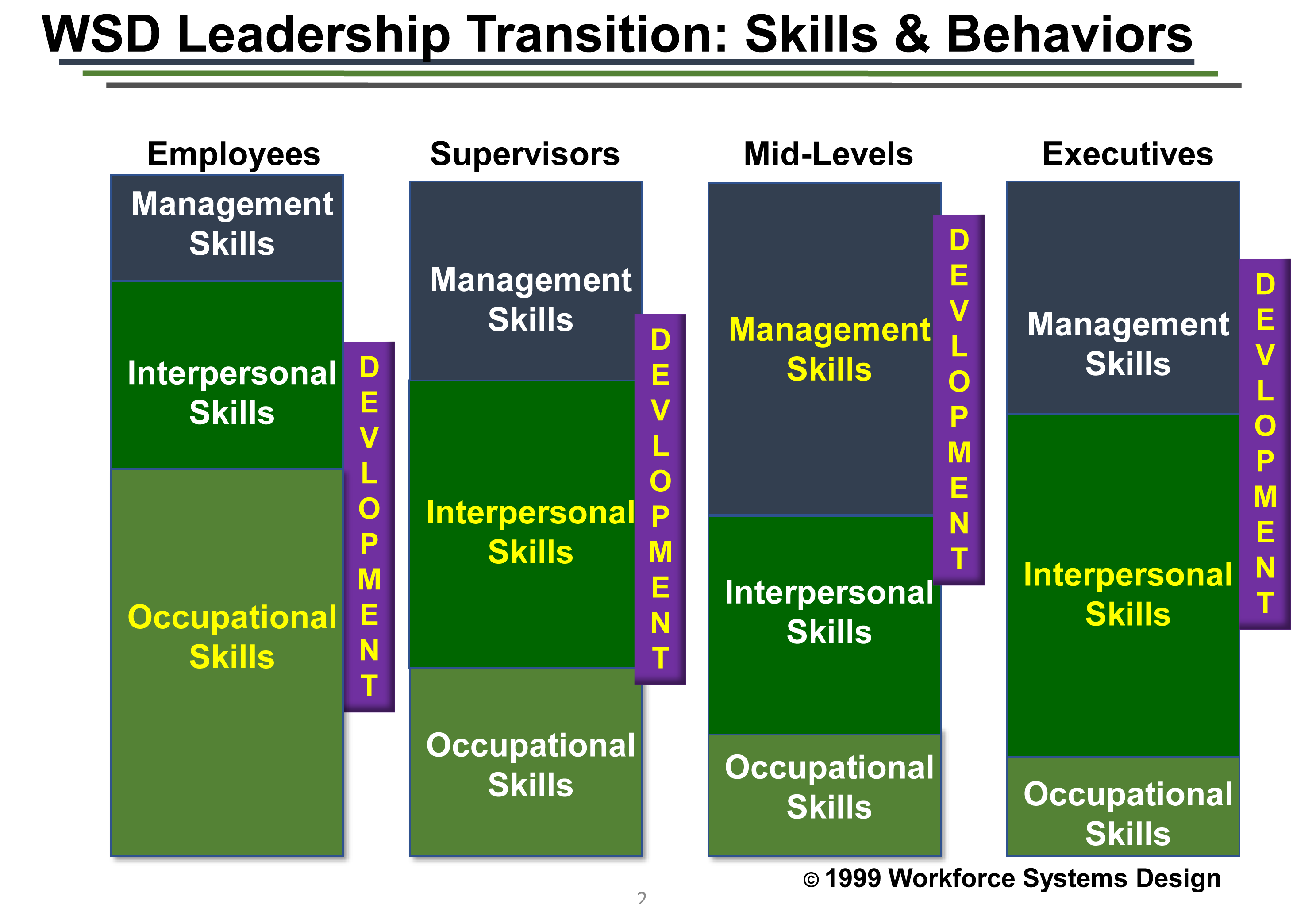Leadership Assessment and Development
Many leaders are promoted because they exhibit a great deal of technical proficiency. The pediatrician becomes chief of staff because she is the best pediatrician. The electrician becomes the project foreman because he has shown more skill than the other electricians. The teacher becomes the principal due to her proficiency in the classroom. The IT specialist who was most "personable" becomes the IT lead.
Workforce Systems Design’s consultants and trainers believe that technical and occupational skills are important, but so are basic managerial and interpersonal skills. When leaders are selected, a regimen and process has to be implemented to make sure that from first line managers to executives, these new leaders can not only technically perform, but also lead the firm to organizational success. As leaders progress, this development regimen must be modified to assure the right leader, for the right level of management at the right.

As leaders progress, training and development efforts have to change with the leaders. This figure expresses how employee training and development investments should focus heavily on occupational/technical proficiency. First line leader development should be more focused on developing basic management and internal relationship building (interpersonal) skills. As the leader becomes a more strategic executive, the training and development expenditures should focus on higher level relationship building (internal and external) and executive management skills.
Practice Area Services
- Leadership Team Assessment and Development
- Mid-Level to Executive Coaching and Individual Development
- 360 Degree Assessment and Feedback
